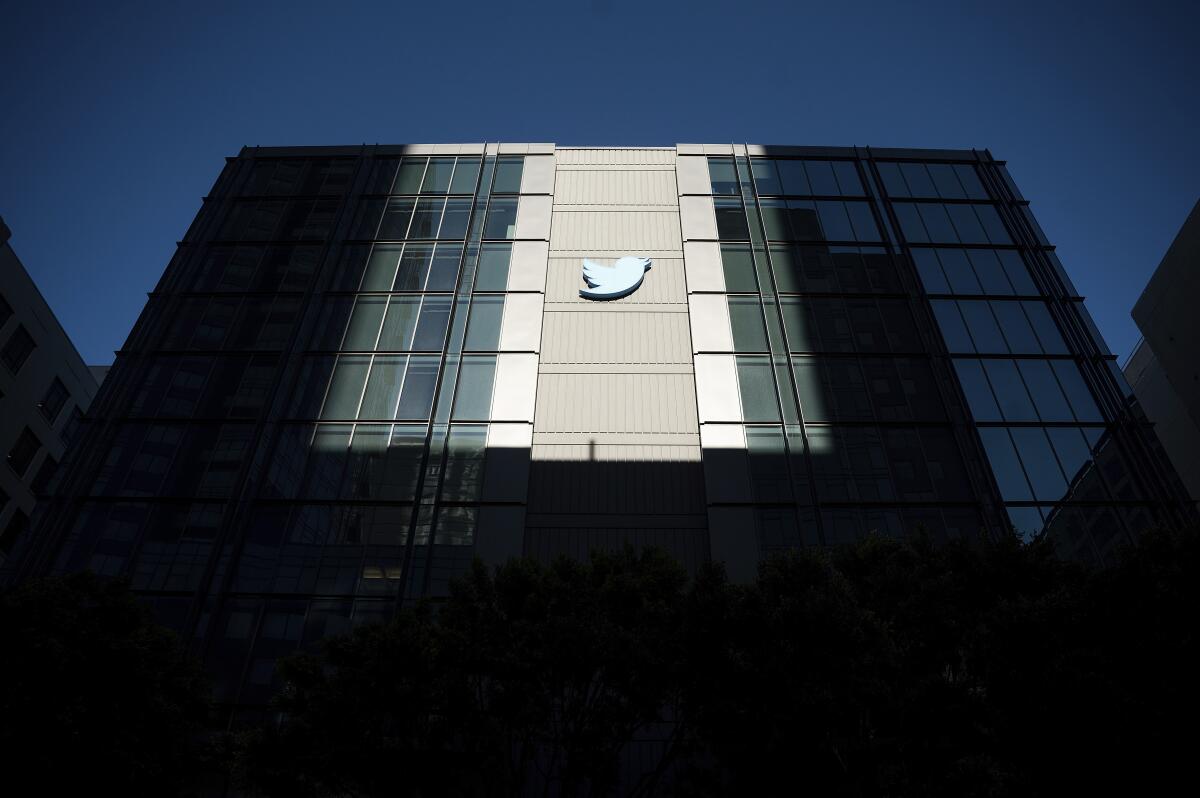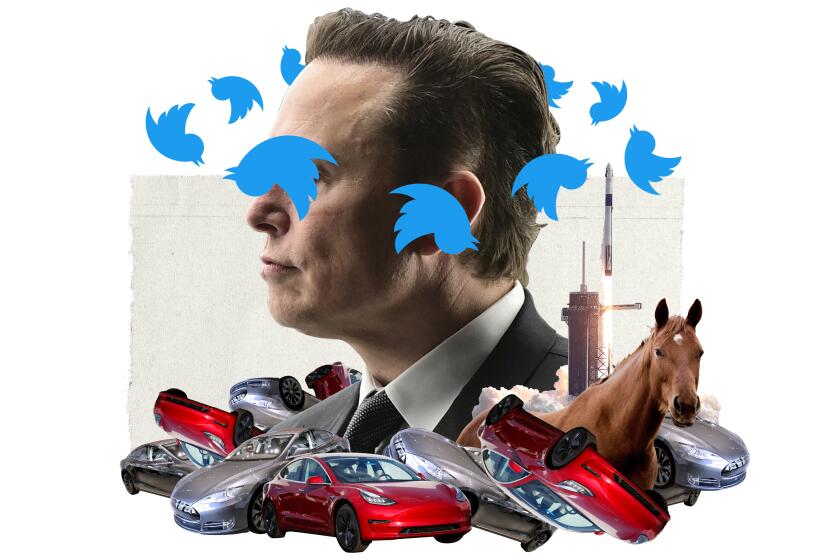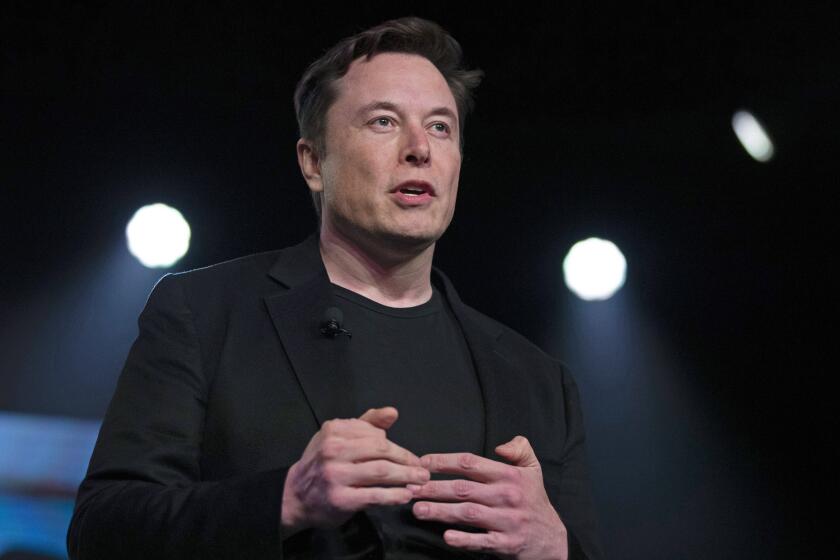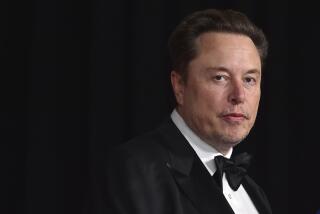Elon Musk’s ultimatum leaves Twitter in chaos and employees in the dark

- Share via
After thousands of employees reportedly declined Elon Musk’s ultimatum this week to commit to a new “hardcore” culture or get out, both outgoing and remaining staffers have been left with one big question: What happens now?
People who thought they took buyouts wonder whether Musk will try to call them back to work. Workers who were laid off don’t know what kind of severance they’re getting or if it’ll ever show up. Those who were urged to stay have no idea what Musk’s plan is for them or the company.
According to one former employee, Musk spent Thursday meeting with engineers to try to entice them to stay, while “goons” from outside the company — a mix of employees pulled from Musk’s other ventures and various yes-men in the multibillionaire’s orbit — met with nominally less important segments of the company. (Former and outgoing Twitter employees agreed to speak for this article under the condition of anonymity, fearing retribution from Musk.)
In what the ex-employee described as an emperor-has-no-clothes situation, the only argument anyone seemed able to give for why employees should trust Musk’s leadership was his past business successes and the possibility that people who stick around might get rich.
Yet the company has offered no specific compensation agreements, the former employee continued, nor has Musk offered a broader plan or strategic vision.
The platform’s trajectory seems to change every few days under Musk’s leadership. Efforts to tweak how the platform’s user verification system works have wavered, and a pivot toward premium subscriptions has left the platform’s user base questioning what a pay-to-play timeline would actually look like. Some have speculated that Musk aims to make Twitter more amenable to pornography.
Elon Musk’s track record as a boss is an endless scroll of impulse firings, retribution, tone-deafness on race — and the impregnation of a subordinate.
In a farewell Twitter thread, Peter Clowes — whose LinkedIn page still identifies him as a senior software engineer at the company — cited Musk’s lack of a clear game plan as motivating his own departure from the company.
“There was no vision shared with us,” Clowes wrote. “No 5 year plan like at Tesla. Nothing more than what anyone can see on Twitter. It allegedly is coming for those who stayed but the ask was blind faith and required signing away the severance offer before seeing it. Pure loyalty test.”
Severance pay has figured prominently in employees’ and ex-employees’ questions about their and the company’s future.
“It is still unclear what the actual severance for any and all people in all stages of layoffs will be,” said one former product designer whose role was cut on Nov. 4. “My group … have now been laid off for 2 weeks already with no severance information.”
An email sent by Twitter‘s human resources department on Nov. 4, a copy of which The Times reviewed, said that employees who were let go would receive details of their severance offer within a week.
That was more than two weeks ago. Still, employees say, nothing has come.
The designer is now part of Twitter’s “non-active” workforce — still technically an employee until February, and getting paid in the meantime, but not doing any actual work. Severance is supposed to kick in after that limbo ends, according to company emails reviewed by The Times, yet it’s not clear what that will look like.
Musk has claimed multiple times that laid-off employees will get three months of severance pay: once in a tweet in which he characterized that plan as “50% more than legally required,” and again in the email he sent to staff offering them the ultimatum.
With a late-night memo to Twitter employees, Elon Musk made his clearest move yet to force a company culture reset.
Yet there’s been “zero information” offered about what the dispensation process will look like, the former designer said via email, and nothing “official” to sign. It’s not even clear what Musk means by three months of severance: “3 months salary? 3 months severance? Does [Musk] consider salary and severance as the same thing?”
“The lack of decent preparation and communication for the layoffs builds frustration in people,” the outgoing designer said. “Since we are technically still employed … we have to manage this frustration with high caution, since we want to prevent still getting fired with cause, which would lead to losing salary until the separation date and also losing the severance.”
An FAQ attached to the Nov. 4 HR email, which The Times also reviewed, said that severance would be sent out about 45 days after the end of employees’ nonworking periods. Yet this could be complicated by recent reports from Insider’s Kali Hays that Twitter’s entire payroll department has resigned (although some accountants remain).
Another former employee confirmed that severance packages haven’t gone out yet, nor has information about laid-off employees’ healthcare coverage. According to the former designer, employees were given a single email address to submit questions about the layoff process, but it doesn’t appear anyone is answering it.
Before Musk took over, Twitter’s severance package included a minimum of two months’ pay plus a prorated performance bonus and extended support for work visas, the product designer said.
“Most of us have lawyers in place as we expect the severances to not track with earlier [pre-Musk] agreements,” the designer said. If Twitter pretends that the payment dispensed during the nonworking period is, in fact, severance pay, “we are preparing a potential class action with affected Tweeps,” also known as Twitter employees.
Former employees considering legal action against Musk reportedly have contacted three law firms.
“We are all waiting on the severance details to unfold, legally,” the designer said, but the lawyers who’ve been consulted “believe we have a strong claim and that we are due the original severance (2 months salary + 3 months vesting/bonus and visa coverage).”
At the start of November, Musk laid off nearly 50% of the company, promising two to three months of severance to those let go. He was almost immediately sued by former employees who alleged Musk had violated federal and state labor laws over mass layoffs.
Laura Reathaford, a California employment lawyer with Lathrop GPM, said Musk’s email calling on employees to commit to a “hardcore” work culture effectively constituted a termination for those unwilling to stick around.
“He made an offer to quit and take three months of severance,” Reathaford said. “If someone accepted that offer, it seems like it can be enforced.”
Musk could change his mind and decide not to fire everyone who didn’t opt into new Twitter, or not offer severance, but employees don’t have to play by his rules. “In any contract negotiation, either party can change their mind, and the other side can decide if they want to continue the negotiation,” Reathaford said.
Employees could go after Musk in two ways: breach of contract or something called “detrimental reliance,” according to Lloyd Greif, chief executive of investment bank Greif & Co. The first is based on the fact that Musk’s email is effectively an oral contract, even if it wasn’t a formal written contract signed by both parties. The second can be pursued when a party relies on a promise made by another party and suffers harm or loss because of it. In this case, employees are relying on the promise of three months of severance pay while they are unemployed and looking for a new job.
“I think it’s an open-and-shut case,” Greif said. “The only thing that could prevent that is bankruptcy” — if Musk filed for Twitter bankruptcy, that would probably be the only way he could get out of paying employees their severance.
Lawyers have suggested that some of the staff who’ve been laid off could also successfully bring discrimination cases against Musk, the former designer said, especially older employees, those on parental leave, or those affected on the basis of their race or gender.
The current chaos at Twitter, though perhaps surprising in its scale and speed, comes not entirely without warning. It follows months-long acquisition drama during which the company’s fate seemed to swing back and forth every few weeks.
Musk finalized his control of the platform on Oct. 28 after trying to back out of an acquisition deal he’d initiated in April. Since then, Twitter’s ranks have been roiled by uncertainty and fear over the fate of their own jobs and a platform in which many employees seem genuinely emotionally invested.
More and more managers and employees had resigned over the last few weeks or were fired for criticizing or speaking out against Musk on public or, reportedly, internal channels, until Musk’s decree this week about the “hardcore” new culture.
“There was no retention plan for those that stayed,” Clowes, the former software engineer, wrote in his farewell tweet thread. “No clear upside for sticking it through the storm on the horizon. Just ‘trust us’ style verbal promises.”
“But,” he added, “tweeps overall were untrusting after the 7 months of acquisition drama.”
Twitter no longer has a formal communications team and could not be reached for comment.
More to Read
Inside the business of entertainment
The Wide Shot brings you news, analysis and insights on everything from streaming wars to production — and what it all means for the future.
You may occasionally receive promotional content from the Los Angeles Times.














